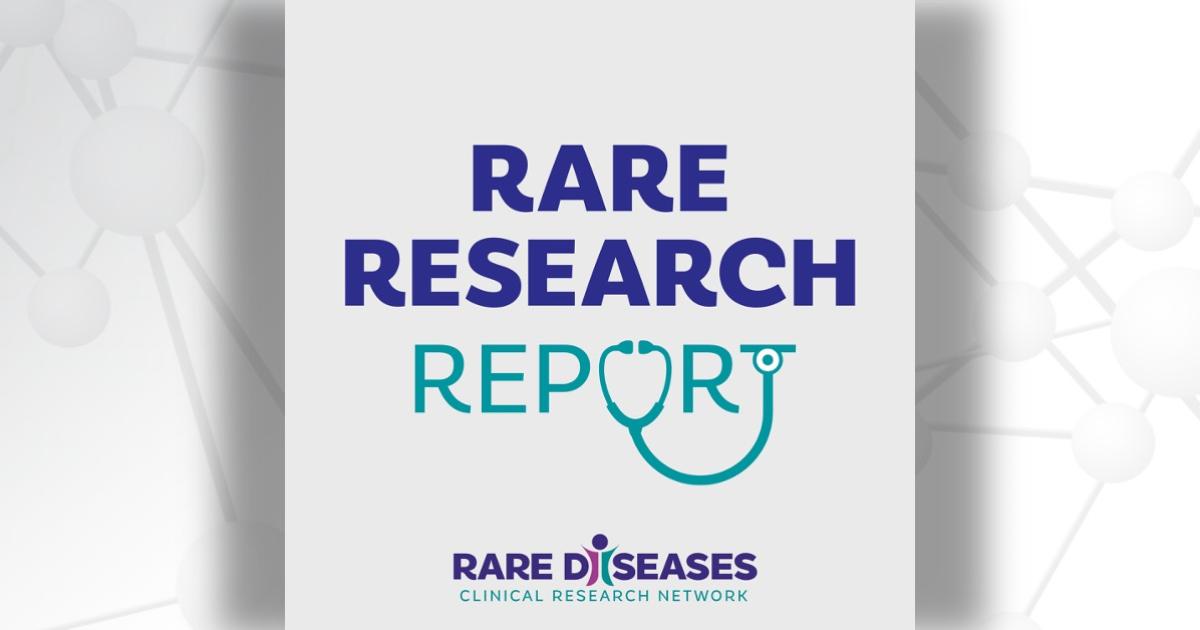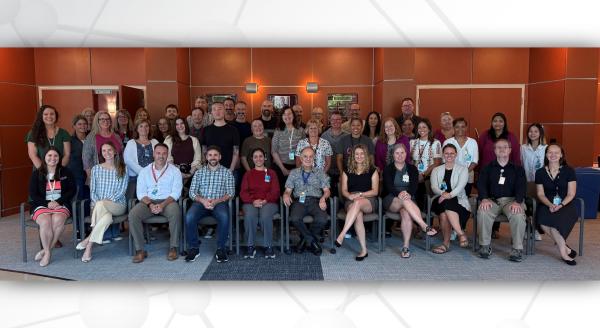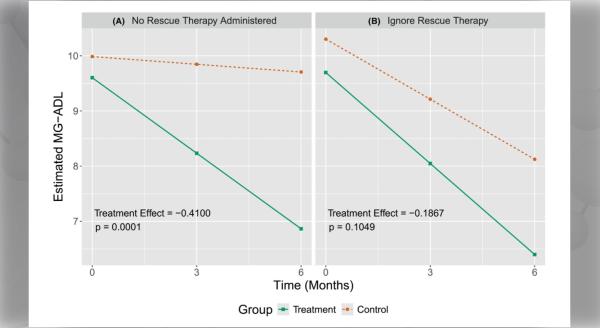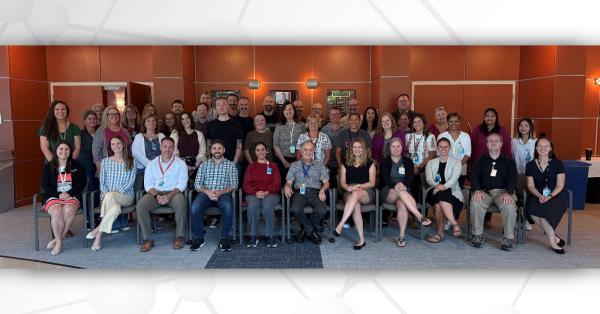Each month, we share summaries of recent Rare Diseases Clinical Research Network (RDCRN) grant-funded publications. Catch up on the latest RDCRN research below.
Jump to:
- Clinical Research in ALS and Related Disorders for Therapeutic Development (CReATe) Consortium
- Consortium of Eosinophilic Gastrointestinal Disease Researchers (CEGIR)
- Global Leukodystrophy Initiative Clinical Trials Network (GLIA-CTN)
- Nephrotic Syndrome Study Network (NEPTUNE)
- North American Mitochondrial Disease Consortium (NAMDC)
- Porphyrias Consortium (PC)
Listen to these summaries on the Rare Research Report podcast.
Clinical Research in ALS and Related Disorders for Therapeutic Development (CReATe) Consortium
Developing and Evaluating a Novel Outcome Measure for Amyotrophic Lateral Sclerosis
Amyotrophic lateral sclerosis (ALS) patients experience a wide variety of physical, mental, emotional, and social symptoms of the disease. Tools to track a patient’s subtle but important changes over time are important for managing the disease burden as well as assessing promising new therapeutic agents. Therefore, highly reliable, sensitive, and valid disease-specific outcome measures for ALS are vital for clinicians and researchers, as well as patients and family members.
In this study, the authors report the development of the Amyotrophic Lateral Sclerosis-Health Index (ALS-HI), which was created and validated in accordance with FDA guidance. This is a multifactorial, disease-specific patient-reported outcome measure capable of measuring meaningful changes in how an ALS patient feels and functions.
To develop the ALS-HI, the authors surveyed a national cross section of 497 individuals with ALS. After identifying the most important symptoms of ALS, they performed factor analysis, qualitative patient interviews, test-retest reliability assessment, and known groups analysis to evaluate and validate the ALS-HI. Fifteen participants took part in a beta test and found the ALS-HI to be clear, easy to use, and relevant.
The study supports use of the ALS-HI as a valid, sensitive, and reliable instrument to assess the disease burden of individual patients with ALS. The ALS-HI could also serve as an effective mechanism to track disease progression and treatment efficacy during therapeutic trials.
Varma A, Weinstein J, Seabury J, Rosero S, Zizzi C, Alexandrou D, Wagner E, Dilek N, Heatwole J, Wuu J, Caress J, Bedlack R, Granit V, Statland J, Mehta P, Benatar M, Kaat A, Heatwole C. The amyotrophic lateral sclerosis-health index (ALS-HI): development and evaluation of a novel outcome measure. Amyotroph Lateral Scler Frontotemporal Degener. 2023 Aug;24(5-6):514-522. doi: 10.1080/21678421.2023.2204871. Epub 2023 May 15. PMID: 37190795.
Consortium of Eosinophilic Gastrointestinal Disease Researchers (CEGIR)
Eosinophilic gastrointestinal diseases (EGIDs) are a group of chronic immune system disorders in which inflammation causes difficulties in daily life and the buildup of a type of white blood cell (eosinophils) in the gastrointestinal tract, which can lead to tissue damage and dysfunction.
To address systemic bias in patient care and research in EGIDs, the Consortium of Eosinophilic Gastrointestinal Disease Researchers (CEGIR) recently formed a diversity committee. The CEGIR diversity committee has defined its purpose through mission and vision statements. The committee has also developed structured educational and research initiatives to enhance diversity, equity, inclusivity, and accessibility (DEIA) in all CEGIR activities.
In this review article, researchers share the process of forming the diversity committee, highlighting milestones achieved and summarizing future directions. Authors hope that this report will serve as a guide and an inspiration for other researchers to enhance DEIA in their fields.
Chehade M, Furuta G, Klion A, Abonia JP, Aceves S, Bose P, Collins MH, Davis C, Dellon ES, Eickel G, Falk G, Gupta S, Hiremath G, Howard A, Jensen ET, Kesh S, Khoury P, Kocher K, Kodroff E, Kyle S, Mak N, McCoy D, Mehta P, Menard-Katcher P, Mukkada V, Paliana A, Rothenberg M, Sable K, Schmitt C, Scott M, Spergel J, Strobel MJ, Wechsler JB, Yang GY, Zicarelli A, Muir AB, Wright BL, Bailey DD. Enhancing diversity, equity, inclusion, and accessibility in eosinophilic gastrointestinal disease research: the consortium for eosinophilic gastrointestinal disease researchers' journey. Ther Adv Rare Dis. 2023 Aug 14;4:26330040231180895. doi: 10.1177/26330040231180895. PMID: 37588777; PMCID: PMC10426297.
Global Leukodystrophy Initiative Clinical Trials Network (GLIA-CTN)
Exploring Gross Motor Function in Aicardi-Goutières Syndrome
Aicardi-Goutières syndrome (AGS) is a rare genetic disorder characterized by a spectrum of motor abilities. The AGS Severity Scale is used to measure outcomes in individuals with AGS. However, because of the relatively limited granularity of this tool, there is a need to define tools that can measure function across the AGS spectrum.
In this study, researchers explored gross motor function as an outcome measure of AGS. The team administered the Gross Motor Function Measure–88 (GMFM-88) and AGS Severity Scale in 71 individuals affected by AGS, characterizing performance variability by genotype.
Results support the GMFM-88 as a potential clinical outcome assessment in subsets of the AGS population. Authors note the need for additional validation of outcome measures that can reflect the diverse gross motor function observed in individuals with AGS, including low motor function.
Gavazzi F, Glanzman AM, Woidill S, Formanowski B, Dixit A, Isaacs D, Kornafel T, Ballance E, Pierce SR, Modesti N, Barcelos I, Cusack SV, Jan AK, Flores Z, Sherbini O, Vincent A, D'Aiello R, Lorch SA, DeMauro SB, Jawad A, Vanderver A, Adang L. Exploration of Gross Motor Function in Aicardi-Goutières Syndrome. J Child Neurol. 2023 Jul 27:8830738231188753. doi: 10.1177/08830738231188753. Epub ahead of print. PMID: 37499181.
Nephrotic Syndrome Study Network (NEPTUNE)
Creating a Comprehensive Atlas of Human Kidney Cells to Accelerate Kidney Disease Research
Kidney diseases are characterized by damage and loss of function in the kidneys. Due to the complexity of the kidney, models that accurately represent human kidney structures and function have been difficult to develop. Without these models, the development of new drugs to treat or prevent kidney disease has been limited.
In this study, a nationwide research team aimed to create the most comprehensive atlas of the human kidney. The team used multiple techniques—including single-cell assays, single-nucleus assays, and spatial imaging technologies—to analyze both healthy reference kidneys and diseased kidneys.
The resulting Kidney Tissue Atlas includes maps of 51 main kidney cell types from rare and novel cell populations, 28 kidney cellular states representing injury or disease, a repository of raw gene data, and interactive 3D models of cells and microenvironment relationships. By allowing the comparison of healthy kidney cells to those injured by kidney disease, data from the new atlas will help investigators understand the factors that contribute to the progression of kidney disease and kidney failure or recovery from injury.
Lake BB, Menon R, Winfree S, Hu Q, Ferreira RM, Kalhor K, Barwinska D, Otto EA, Ferkowicz M, Diep D, Plongthongkum N, Knoten A, Urata S, Mariani LH, Naik AS, Eddy S, Zhang B, Wu Y, Salamon D, Williams JC, Wang X, Balderrama KS, Hoover PJ, Murray E, Marshall JL, Noel T, Vijayan A, Hartman A, Chen F, Waikar SS, Rosas SE, Wilson FP, Palevsky PM, Kiryluk K, Sedor JR, Toto RD, Parikh CR, Kim EH, Satija R, Greka A, Macosko EZ, Kharchenko PV, Gaut JP, Hodgin JB; KPMP Consortium; Eadon MT, Dagher PC, El-Achkar TM, Zhang K, Kretzler M, Jain S. An atlas of healthy and injured cell states and niches in the human kidney. Nature. 2023 Jul;619(7970):585-594. doi: 10.1038/s41586-023-05769-3. Epub 2023 Jul 19. PMID: 37468583; PMCID: PMC10356613.
Creating an Integrated Organoid Omics Map to Capture the Complexity of Kidney Disease
Kidney diseases are characterized by damage and loss of function in the kidneys. Kidney organoids are a promising model to study kidney disease. However, a better understanding of these models and their relevance to disease is critical to advance their use.
In this study, researchers created an integrated kidney organoid omics map, capturing the complexity of human kidney disease. The team combined omics data from organoid disease models and other preclinical models with data from humans with disease, showing that both inflammation and fibrosis can be rapidly triggered in organoids even in the absence of immune cells.
The new map will enable modeling of more complex kidney disease, driving better outcomes for patients. Authors suggest that other kidney disease researchers can integrate these datasets with their own to improve and refine the creation of organoids relevant to kidney disease.
Lassé M, El Saghir J, Berthier CC, Eddy S, Fischer M, Laufer SD, Kylies D, Hutzfeldt A, Bonin LL, Dumoulin B, Menon R, Vega-Warner V, Eichinger F, Alakwaa F, Fermin D, Billing AM, Minakawa A, McCown PJ, Rose MP, Godfrey B, Meister E, Wiech T, Noriega M, Chrysopoulou M, Brandts P, Ju W, Reinhard L, Hoxha E, Grahammer F, Lindenmeyer MT, Huber TB, Schlüter H, Thiel S, Mariani LH, Puelles VG, Braun F, Kretzler M, Demir F, Harder JL, Rinschen MM. An integrated organoid omics map extends modeling potential of kidney disease. Nat Commun. 2023 Aug 14;14(1):4903. doi: 10.1038/s41467-023-39740-7. PMID: 37580326; PMCID: PMC10425428.
North American Mitochondrial Disease Consortium (NAMDC)
Mitochondrial diseases are multisystemic, genetic disorders involving dysfunction of the mitochondria (specialized cell structures that produce energy), which affects cellular metabolism. Diverse mitochondrial DNA (mtDNA) mutations are associated with diverse phenotypes (observable characteristics), suggesting that metabolic vulnerabilities may be specific to organ and cell types.
In this study, researchers developed a multi-omics approach to investigate the properties of mitochondrial genetics. In single cells derived from six patients with mitochondrial diseases, the team quantified deletions in mtDNA alongside cell state features.
Results reveal the dynamics of pathogenic (disease-causing) mtDNA heteroplasmy (multiple variants within a cell) in individual blood and immune cells. Authors note that these findings demonstrate the power of single-cell multi-omics to reveal fundamental properties of mitochondrial genetics.
Lareau CA, Dubois SM, Buquicchio FA, Hsieh YH, Garg K, Kautz P, Nitsch L, Praktiknjo SD, Maschmeyer P, Verboon JM, Gutierrez JC, Yin Y, Fiskin E, Luo W, Mimitou EP, Muus C, Malhotra R, Parikh S, Fleming MD, Oevermann L, Schulte J, Eckert C, Kundaje A, Smibert P, Vardhana SA, Satpathy AT, Regev A, Sankaran VG, Agarwal S, Ludwig LS. Single-cell multi-omics of mitochondrial DNA disorders reveals dynamics of purifying selection across human immune cells. Nat Genet. 2023 Jul;55(7):1198-1209. doi: 10.1038/s41588-023-01433-8. Epub 2023 Jun 29. PMID: 37386249.
Porphyrias Consortium (PC)
Erythropoietic protoporphyria (EPP) and X-linked protoporphyria (XLP) are inherited, metabolic disorders characterized by the buildup of protoporphyrins (substances that bind metals to form complexes, such as the iron found in red blood cells). In addition to phototoxicity (severe pain during light exposure), patients with EPP and XLP often experience liver dysfunction. However, there is a lack of published information on the management of liver disease in these patients.
In this study, researchers established evidence-based guidelines for the diagnosis and management of liver disease in protoporphyrias. A group of 15 clinicians from the Porphyrias Consortium—with expertise in porphyrias and hepatology, hematology, and genetics—conducted a systematic literature review to develop new recommendations.
The resulting guidelines address important clinical topics in protoporphyrias and liver disease, including interventions and therapies based on severity. Authors note that these guidelines may not only improve patient care, but also inspire new collaborative research.
Levy C, Dickey AK, Wang B, Thapar M, Naik H, Keel SB, Saberi B, Beaven SW, Rudnick SR, Elmariah SB, Erwin AL, Goddu RJ, Hedstrom K, Leaf RK, Kazamel M, Mazepa M, Philpotts LL, Quigley J, Raef H, Ungar J, Anderson KE, Balwani M; Porphyrias Consortium of the Rare Diseases Clinical Network.. Evidence based consensus guidelines for diagnosis and management of Protoporphyria-Related liver dysfunction in erythropoietic protoporphyria and X-Linked protoporphyria. Hepatology. 2023 Jul 27. doi: 10.1097/HEP.
The Rare Diseases Clinical Research Network (RDCRN) is funded by the National Institutes of Health (NIH) and led by the National Center for Advancing Translational Sciences (NCATS) through its Division of Rare Diseases Research Innovation (DRDRI). Now in its fourth five-year funding cycle, RDCRN is a partnership with funding and programmatic support provided by Institutes, Centers, and Offices across NIH, including the National Institute of Neurological Disorders and Stroke, the National Institute of Allergy and Infectious Diseases, the National Institute of Diabetes and Digestive and Kidney Diseases, the Eunice Kennedy Shriver National Institute of Child Health and Human Development, the National Institute of Arthritis and Musculoskeletal and Skin Diseases, the National Heart, Lung, and Blood Institute, the National Institute of Dental and Craniofacial Research, the National Institute of Mental Health, and the Office of Dietary Supplements.






